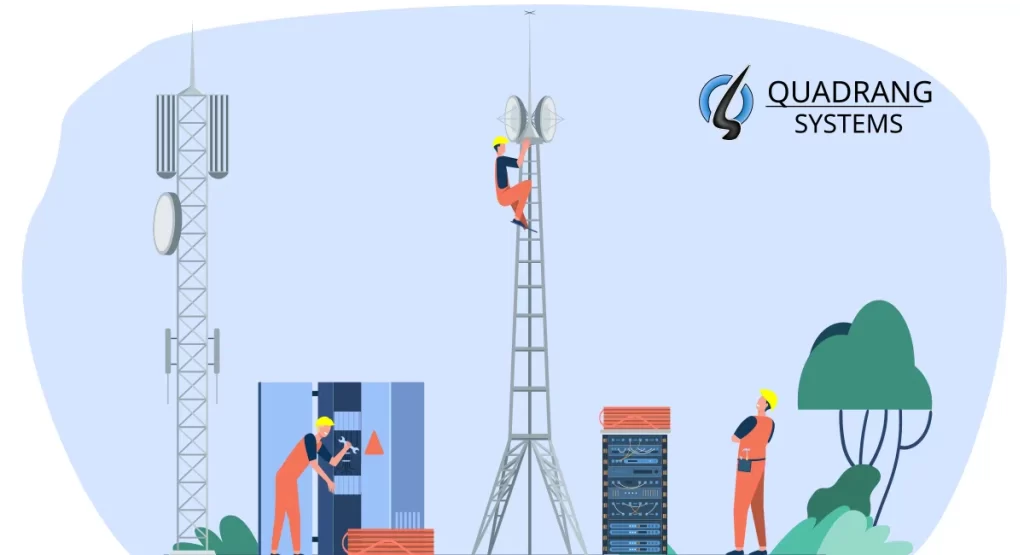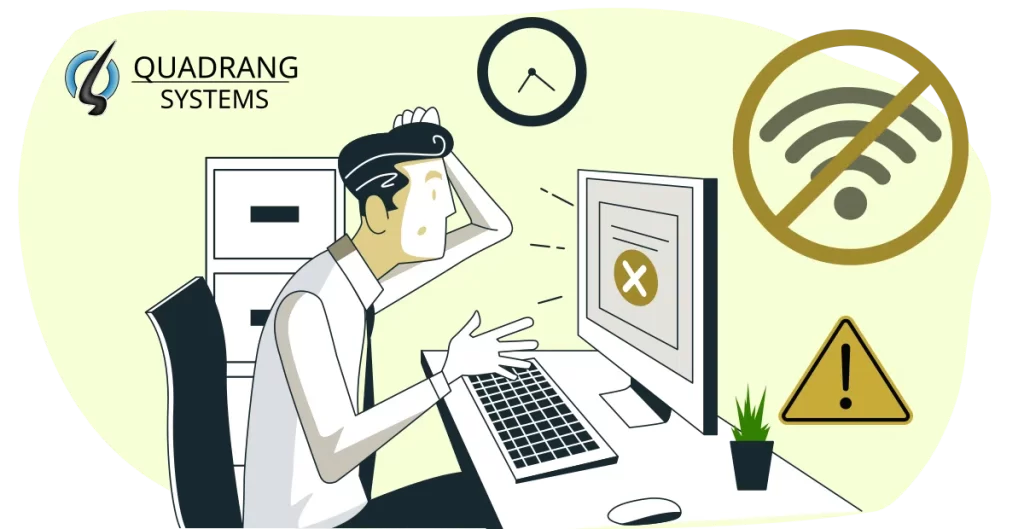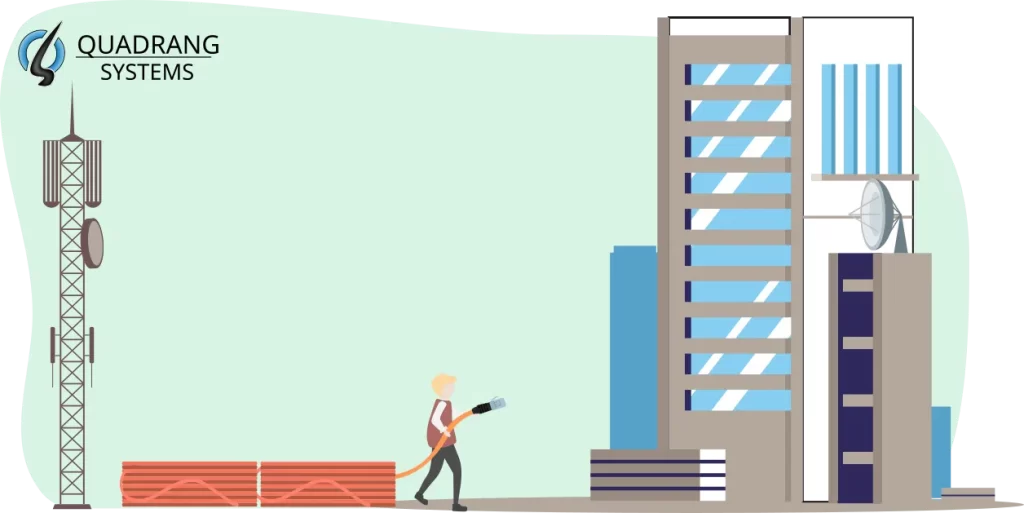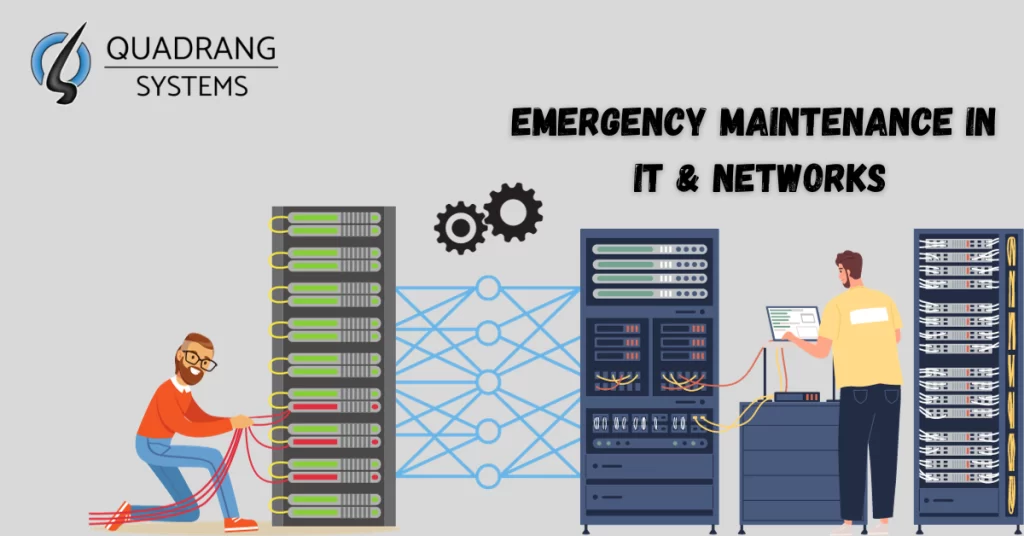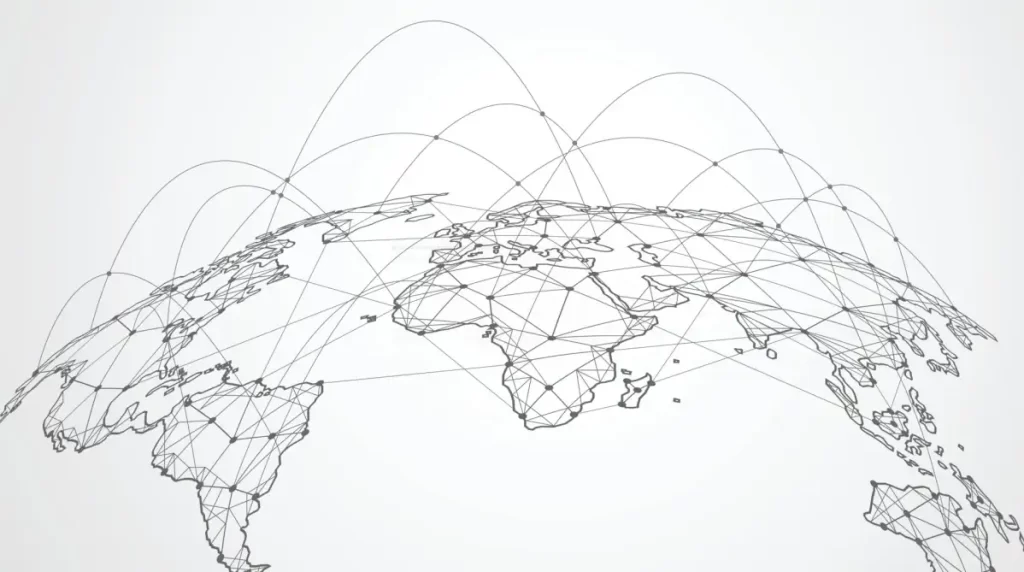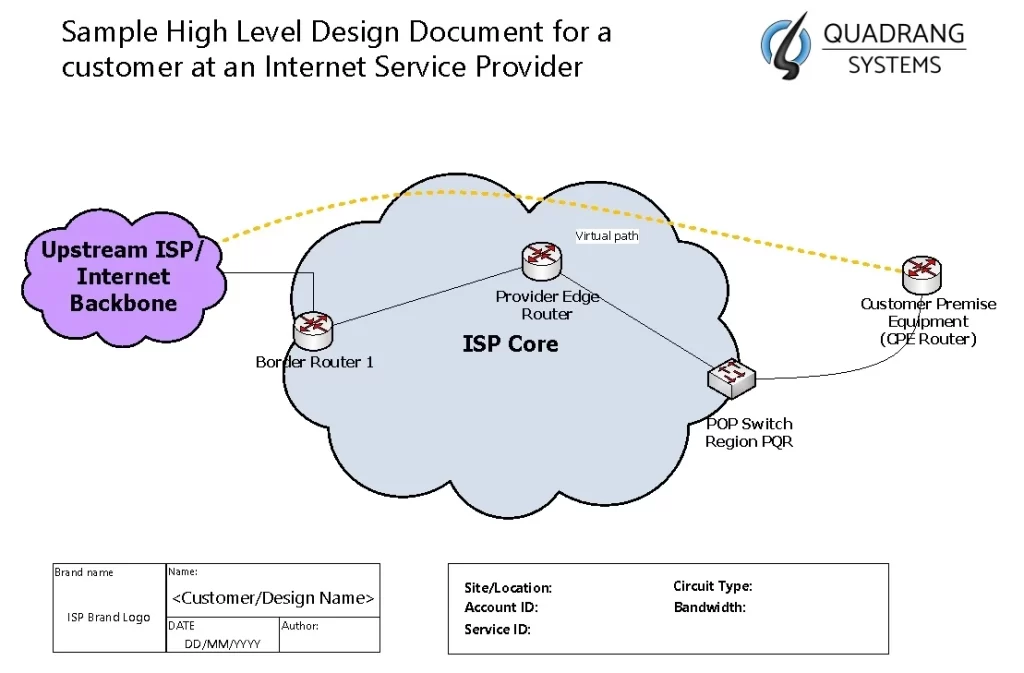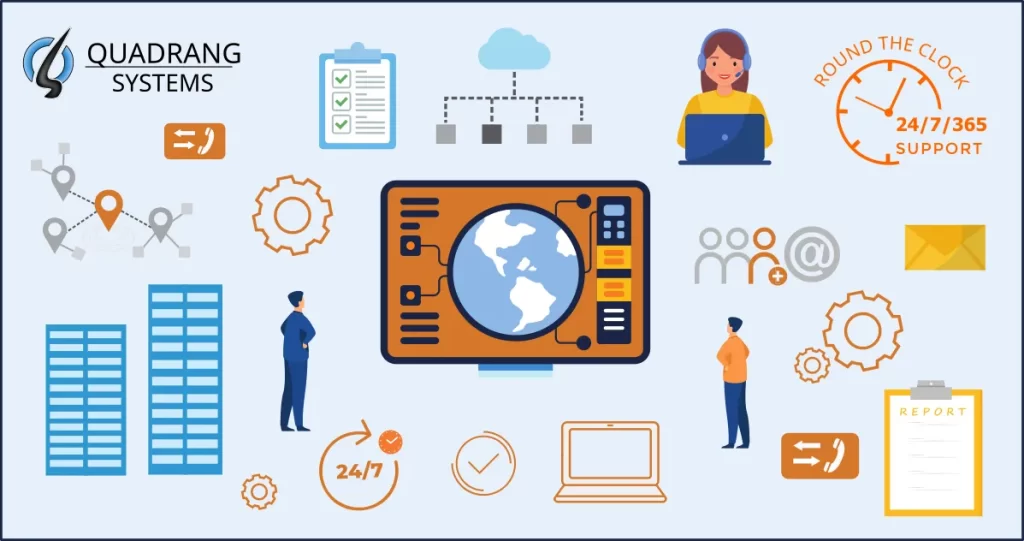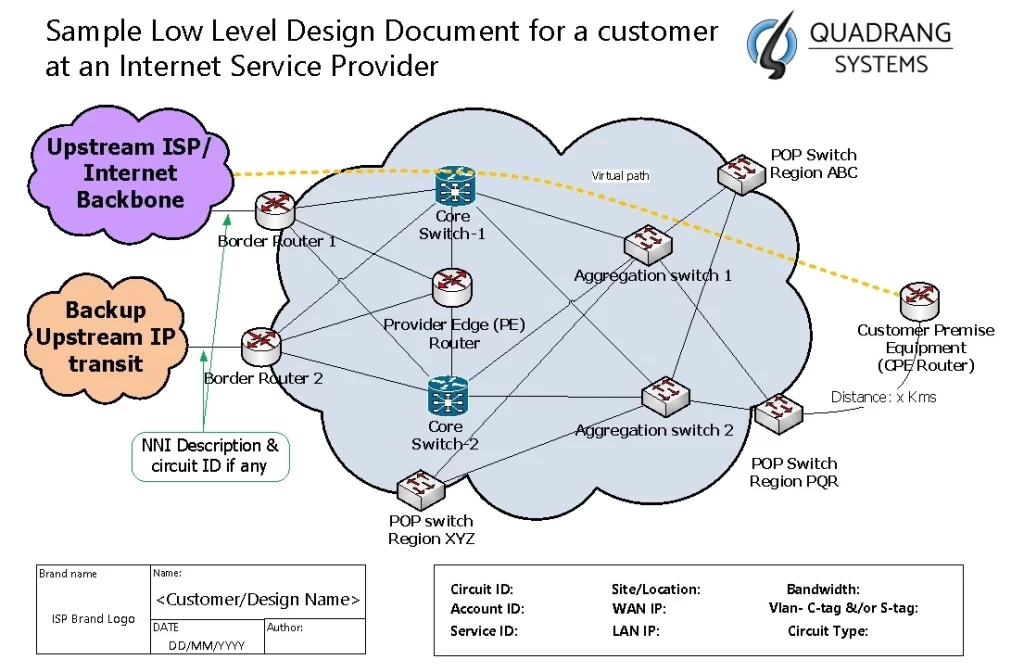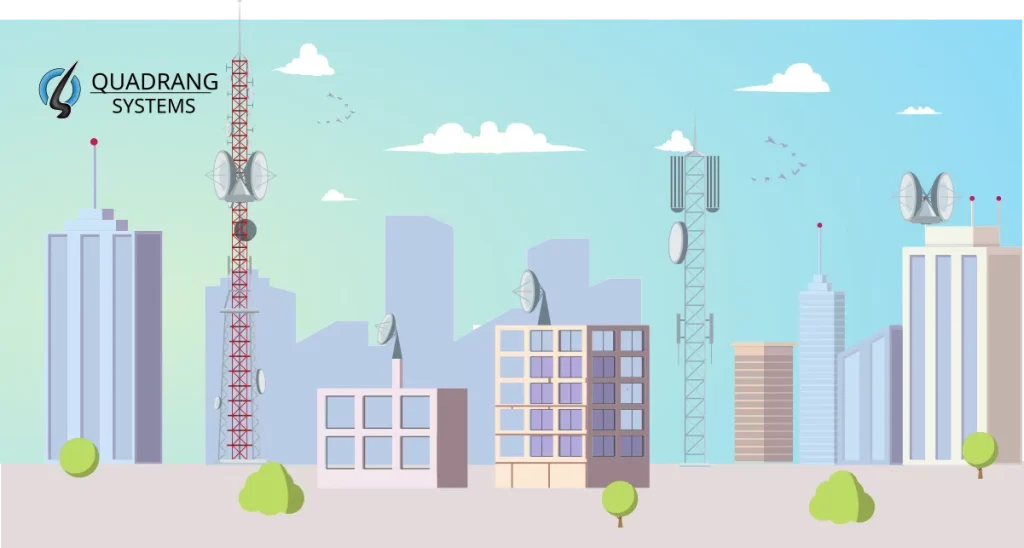2 unsung heroes in ISP/Teleco: OSP & Facilities
In the realm of Internet Service Providers (ISPs) and Telecom companies, a seamless and reliable network is the backbone of success. Behind the scenes, two crucial engineering roles ensure that this network operates efficiently, securely, and with optimal performance: Outside Plant (OSP) Engineers and Facilities Engineers. Let’s delve into their roles and responsibilities within ISPs, focusing on how they utilize cutting-edge technology, like Maps and GIS, to plan fiber optic networks, maintain power availability, and ensure the integrity of colocation and communications room facilities.
What is an OSP engineer?
An Outside Plant Engineer (OSP/OPE) is a professional who is involved in the design, planning, and maintenance of the physical infrastructure that supports an internet service provider or a telecommunications networks. This includes the cables, conduits, poles, towers, and other equipment used to connect homes and businesses to communication networks.
What is a Facilities engineer?
A Facilities Engineer is a professional involved in the design, planning, construction, maintenance, and operation of buildings, facilities, and infrastructure within an organization, and as such within an ISP and Telco company. Hence, it is essentially very similar to an OSP engineer. They play a crucial role in ensuring that a facility operates efficiently, safely, and in compliance with relevant regulations.
Duties and responsibilities in the realm of Facilities and OSP engineers
Below listed are the duties and responsibilities broadly undertaken by the OSP and Facilities engineers. In bigger organizations, OSP and facilities engineer may be different persons, while in smaller ones these two roles are combined, in addition to them also being a fiber optic engineer.
Site survey, Viability/Feasibility
Every time there’s a new network build project or whenever the existing network has to be expanded upon, OSP engineers are asked to visit the area and survey it. OSP engineer then uses GIS and online Maps to determine and feasibility for the network expansion plan and submits a detailed report. This includes any hindering or delaying elements
Physical Network Design
OSP/Facilities engineers design the layout of the proposed network. This involves determining the best routes for cables, the optimal placement of ducts, conduits, poles or towers, and ensuring that the network meets the required specifications for performance and reliability. This physical design takes the skill of the engineer so that the cables and network infra has the robust area to go through and sit in. This helps to ensure the infra is protected physically and also takes the best and shortest path
Infrastructure Maintenance
While the infra is installed, the OSP/facility engineer also ensures that the placement be easy for access to maintenance because once a facility is operational, Facilities Engineers oversee its ongoing maintenance and repairs. This includes developing maintenance schedules, coordinating repairs, and ensuring that equipment and systems are functioning properly. Telecom infra is usually placed and hosted on Data Centers, Colocations and customer comms rooms where maintenance is carried out. See our blog on preventive maintenance.
Ensuring access and permit to building facilities
OSP/facilities engineers often work with local companies and government agencies to obtain permits for construction, as well as negotiate rights-of-way for laying cables or erecting infrastructure on public or private property. They also work with local buildings, the building’s facilities engineer, custodians and site’s caretakers which may be owned or rented. There are also places where there’s dedicated care taking company who maintains security and oversees and grants access when required by 3rd parties. The OSP/facilities engineer builds rapport and relationship with these caretakers to ensure smooth access during emergencies. As stated above, access is essential at Data centers, colocations and customer comms rooms.
Material quality, procurement advice, cost estimation
Mostly, the OSP/facilities engineers also advice on choosing the appropriate materials for the outside plant or the IT/Network and Telecom infrastructure. This is also sometimes done by the Network manager or procurement team. Survey results and advice by OSP engineer is crucial for the correct material/parts ordering by the procurement team to ensure longevity and efficiency of the network or facility being built. This includes selecting cables, conduits, enclosures, racks, UPS/Inverters/Batteries, cooling equipment, and other hardware.
OSP Engineers are also involved in estimating the costs associated with building and maintaining such infrastructure. One such example can be cost of digging a duct to lay fiber optic cable or cost of building a manhole to hide fiber loop. This helps in budgeting for projects and determining the feasibility of network expansions or upgrades.
Power Management
Facilities Engineers often play a key role in power management within a facility. They analyze which hosted colocation or wireless highsite needs how much power, which equipment runs on AC, which on DC. The UPS battery capacity for the total power requirements of the equipment on that site for a certain amount of power backup. They also ensure the power bills are paid regularly and any site facing frequent power outages are dealt with properly
Health, Safety and Compliance
Health and Safety is a crucial and legal aspect in many countries where outdoor infrastructure work or working on heights is being done. Wearing reflective attire, helmets, gloves, shoes and other safety gear is of utmost importance. Facilities and OSP engineers should follow this and ensure that such gear is available to even other field technician. Ensuring the safety of a facility’s occupants, the field technicians and their own safety is a top priority for OSP and Facility engineers. Also when to visit a site and when not to visit a site is extremely important. For example: 1) High site towers, masts should not be climbed during the evening or night’s darkness. 2) Visiting or touching bare metal during rains is not recommended. 3) Going in water clogged areas should be avoided. 4) Any visit to rooftops should be accompanied with or in the presence of the custodian or the site caretaker. These safety protocols and inspections ensure compliance with relevant safety regulations following the country they operate in.
Energy, Sustainability & Environment
Just like the Facilities/OSP engineers ensure power availability, they also analyze energy usage, implement energy-saving initiatives, and recommend improvements to make operations more energy-efficient. As of 2024, there is a massive focus on Environment Sustainability all the industries and sectors. Focus is to reduce, reuse and recycle for reducing global warming. Things like power requirement for cooling in a colocation and equipment health for the most efficient and optimal balance between energy consumption and equipment longevity.
To conclude…
Overall, Facilities Engineers are essential for the smooth operation of buildings and infrastructure, combining engineering knowledge with practical management skills to create safe, efficient, and sustainable environments.


